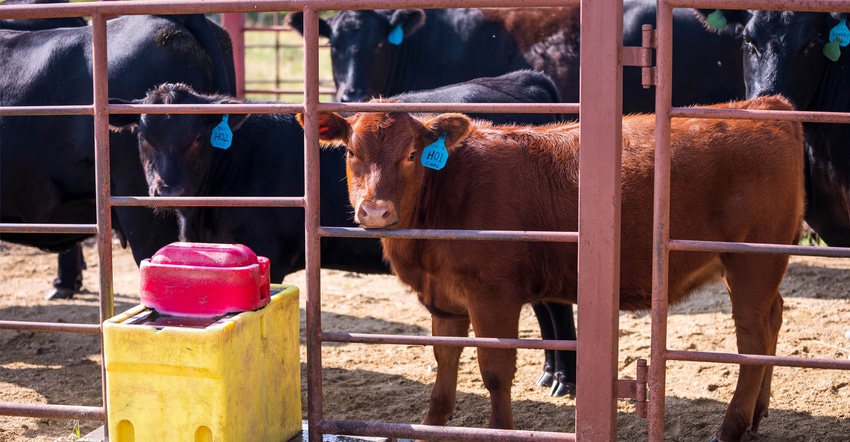July 19, 2021

When the thermometer inches into the 100-degree-F territory, it can get mighty uncomfortable for people. But livestock also feel the effects of hot summer days.
A.J. Tarpoff, Kansas State University Research and Extension beef veterinarian, says temperature, humidity, wind speed and solar radiation all affect cattle. Not only do producers need to watch daytime temperatures, Tarpoff says, but they also need to monitor nighttime temperatures — which is just as important as managing and preventing heat stress.
“They really need about six hours of nighttime cooling to dissipate the heat load they accumulated during the day,” Tarpoff says.
Two forecasting tools Tarpoff recommends are the U.S. Meat Animal Research Center's heat stress monitor and the Kansas Mesonet.
Tips to manage heat stress
To minimize the amount of heat stress on the cattle, Tarpoff offers some advice:
• Stick to cool times. Finish all processing and handling of cattle before 10 a.m., and feed later in the evening. “When we feed cattle, they will actually increase their heat load just from digestion for the next four to six hours,” Tarpoff says.
• Reduce stocking load. This increases spacing and allows for better air circulation and easier access to water. “During the summer months, we want to increase wind speed as much as we can, just to be able to dissipate some of that heat load,” Tarpoff says.
• Provide shade. Give cattle bedding and shade so that they have a cool place to lie. “Cattle have an immense shade-seeking behavior,” he says.
• Mist in morning or evening. Use water misters only in the morning or evening for evaporative cooling of the pen surface. “We don’t wet the cattle to cool them during the heat of the day,” he says. That can actually increase the humidity at the pen level during the hottest time of day.
Source: Kansas State Research and Extension is solely responsible for the information provided and is wholly owned by the source. Informa Business Media and all its subsidiaries are not responsible for any of the content contained in this information asset.
You May Also Like




